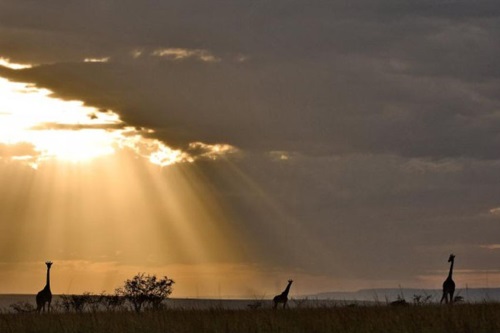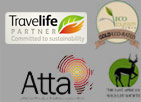THE CONSERVANCY CONCEPT
How to achieve a sustainable form of tourism which provides real benefits for the local communities makes a significant contribution to wildlife conservation and the preservation of the Mara eco-system as one of the premier tourist attractions in Kenya.
The 3 key elements of our conservancy concept, how these are linked together and are making a difference in the conservation of the Mara for the long-term:
- ENVIRONMENT Stopping the degradation of the Mara eco-system, reversing the decline in wildlife, increasing bio-diversity, allowing recovery of wildlife habitat, conserving the wild animals, birds and plants.
- COMMUNITY Giving the Maasai landowners genuine and meaningful benefits from allowing their lands to be used for wildlife conservation.
- TOURISM Creating a new form of tourism that gives our tourist industry a real boost by providing a better experience for visitors and which avoids the high density minibus safari for which Kenya has often been criticised.
These 3 aspects have been described as the “triple bottom line” – providing benefits or profits for the environment, for local people and for the private sector safari companies.
The map below shows the original Mara eco-system made up of the Masai Mara National Reserve, the Mara Triangle and the out-lying community lands or former “group ranches”. (Look for the location of Koiyaki and Ol Kinyei which have been sub-divided and are the site of the new conservancies.)
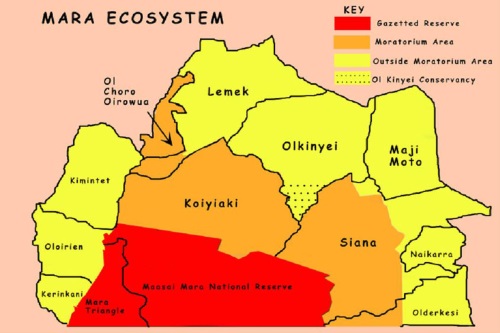
The map below shows how Koiyaki and Ol Kinyei Group Ranches have now been sub-divided into thousands of smaller parcels of land, on average of around 50 to 100 acre plots and allocated to individual Maasai owners who hold the title deeds and who can sell or develop their plots as they wish.

Working with the Maasai landowners, Gamewatchers Safaris pioneered the creation of community-owned wildlife conservancies, starting with Ol Kinyei Conservancy in 2005 and followed by Olare Orok, Motorogi and most recently Naboisho Conservancy.
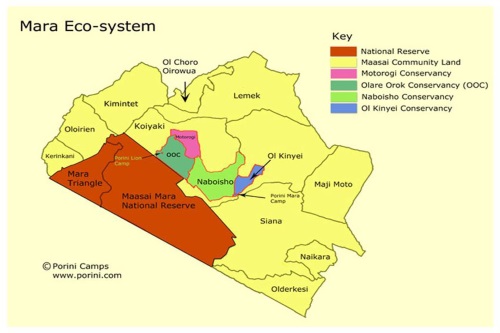
ENVIRONMENTAL ISSUES:
Negative trends – declining wildlife
BBC NATURE NEWS:
2 June 2011
Wildlife ‘crash’ in the Mara region of Kenya, Africa
By Matt Walker Editor, BBC Nature
See the full page link: https://www.bbc.co.uk/nature/13573912

Environmental Issues:
Negative trends – declining wildlife
Some statistics:
- Populations of wildlife species in the world-renowned Masai Mara reserve in Kenya have crashed in the past three decades, according to research published in the Journal of Zoology.
- Dr Joseph Ogutu, a Kenyan statistician at the University of Hohenheim, Germany conducted the study with colleagues there and at the International Livestock Research Institute in Nairobi, Kenya. The team looked at data gathered since aerial monitoring of Kenya’s wildlife began in 1977.
- This covered 12 species of large mammal, ostriches and livestock, and allowed the team to calculate trends in wildlife numbers over a 33-year period across the entire reserve, and in the Masai pastoral ranches adjoining the reserve.
- Numbers of impala, warthog, giraffe, topi and Coke’s hartebeest in the Mara eco-system have declined by over 70%, say the scientists. Beyond the reserve in the wider Mara, buffalo and wild dogs have all but disappeared, while huge numbers of wildebeest no longer pass through the region on their epic migration.
Scientists report huge decline in wildlife in Mara
- There appear to be three main causes of these dramatic declines: the activities of poachers, changing land use patterns in ranches within the Mara eco-system, and an increase in the numbers and range of livestock held on these ranches.
- According to Dr Ogutu, over 1500 poachers have been arrested within the Mara conservancy between 2001 and 2010, with more than 17,300 snares collected by rangers in the same period.
- “Poaching continues to be a major menace,” he says.
- However, numbers of cattle grazing in the reserve have increased by more than 1100% per cent, although it is illegal for them to so do.
- This explosion in the numbers of domestic livestock grazing in the Mara region of south-west Kenya, including within the Masai Mara national reserve, is one of the principal reasons wildlife has disappeared, say the scientists who conducted the research.
Reasons for wildlife decline:
- HABITAT LOSS ON COMMUNITY-OWNED LANDS OUTSIDE RESERVE (cultivation, intensive ranching, settlements, charcoal, forest clearance)
- POACHING AND KILLING OF WILDIFE INSIDE AND IN AREAS BEYOND THE RESERVE
- OVER-GRAZING: TOO MANY COWS, SHEEP , GOATS
- OVER-DEVELOPMENTS BY TOURISM SECTOR: HIGH DENSITY TOURISM
HABITAT LOSS:
Charcoal burning is destroying Kenya’s forests. The next image shows how Acacia forests within the Mara eco-system outside the Reserve are being systematically destroyed to supply charcoal to urban centres.
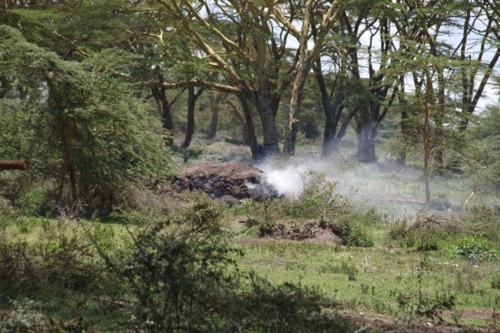
POACHING:
The photo below shows an elephant which came into Olare Orok Conservancy with a spear through its head. Injured animals come into our conservancies to seek refuge as they know they will be safe.
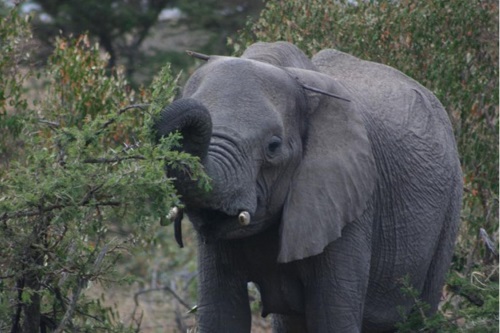
The next image shows a giraffe which came into the conservancy from outside with a wire snare round its neck:

This male lion came into Olare Orok Conservancy with an arrowhead in his back:
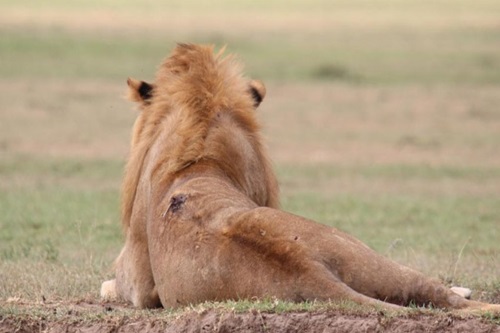
Our Conservancy Warden and rangers work closely with the Kenya Wildlife Service vet who comes in to treat any animals injured by poachers which have come into the conservancy including those shown in the preceding slides. He treats elephants, giraffes, lions and other endangered animals needing attention including cheetahs, leopards, and wild dogs.
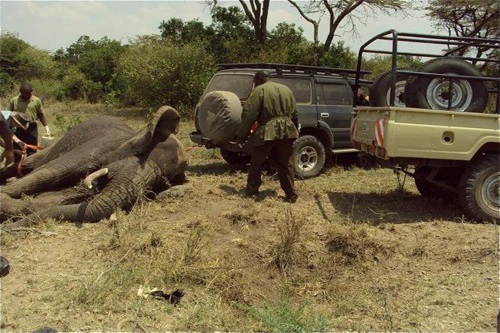
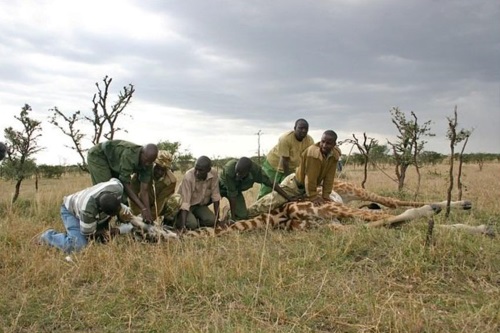
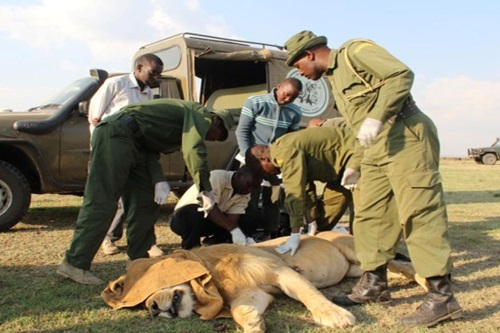
TOURISM ISSUES
Concerns about negative aspects.
Over developments within the Mara Reserve and ribbon development along the boundaries and near the gates especially in Talek, Sekenani, Siana resulting in high density tourism.
There was only 1 lodge and 100 beds in the 1960s – but over 160 camps and lodges and over 7,000 beds by August 2011.
*Within the Mara Reserve there has been over-development of tourist facilities resulting in too many vehicles crowding the animals and spoiling the visitor experience as shown below:
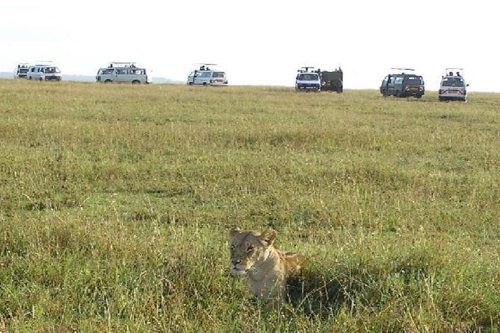
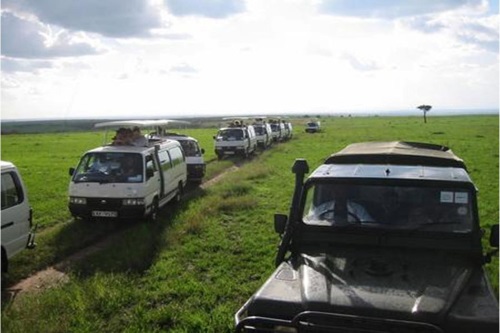

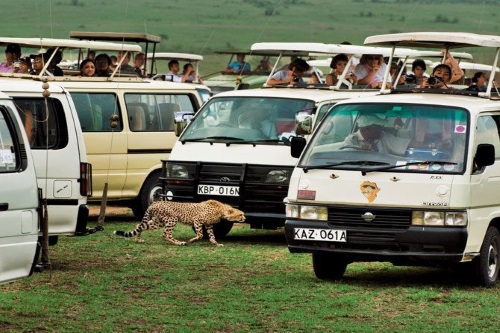
The Conservancy Concept as a means of addressing the problems: environmental, community issues and tourism:
The key features of our Conservancy Concept, as applied at Olare Orok, Motorogi, Naboisho and Ol Kinyei, which may differ from previous “concessions” or earlier models of safari-tourism :
- The conservancy is an area of at least 7,000 acres of community-owned land made up of individual parcels leased from the owners and set aside exclusively for wildlife.
- Payment is per acre, not per tourist, and is made monthly regardless of tourist numbers and paid directly to every individual landowner and not via a central committee.
- The lease is paid by the safari operators who operate the tourism activities in the conservancy.
- The is a maximum density of 1 tent per 700 acres and normally a maximum size of 12 tents per camp.
- The area is vacated by the owners who remove all homesteads and livestock bomas.
- Grazing of domestic livestock and cattle incursions are controlled. Normally livestock is excluded but there may be rotational grazing.
- The conservancy is managed by a warden and rangers whose costs are covered by the safari company.
POSITIVE EFFECTS OF CONSERVANCIES
ENVIRONMENT – Positive effect on Bio-diversity of the new conservancies.
- No more over-grazing in the conservancy.
- No sedentary homesteads or livestock bomas in the conservancy.
- Grass and vegetation recovers.
- Rainfall increases over the conservancies! Micro-climate…
- Virtually no poaching or wildlife killing within the community-owned conservancies.
- Presence of warden and rangers to protect wildlife in the conservancies.
COMMUNITY ISSUES- Positive effects of Conservancies
- Payments received directly by individual landowners, NOT via a committee with chance of money going astray.
- Employment opportunities for landowner families.
- Land improves, vegetation and grass regenerates, no tree-cutting or ploughing.
- Continued ownership of land by the individual title deed holder.
- Involvement / participation of landowners
- Koiyaki Guiding School: training for school-leavers who can have a career in their conservancies.
- The camp staff, guides and conservancy rangers are all drawn from the families of the Maasai landowners

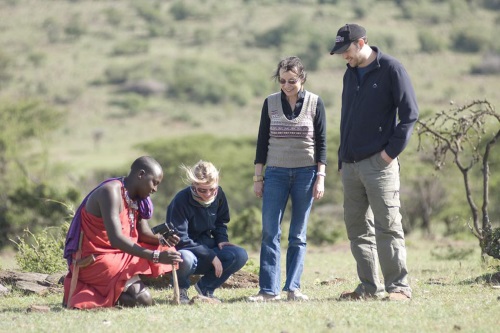
TOURISM – Positive effects of conservancies
- The camps, small authentic bush camps:
Porini Lion Camp in Olare Orok Conservancy: 10 guest tents,
Porini Mara Camp in Ol Kinyei Conservancy: 6 guest tents. - The type of tourism – small scale, emphasis on guiding and the safari experience.
- Eco-friendly – energy, sewage, refuse disposal all certified by Ecotourism Kenya and the camps have silver certification.
- Wildlife viewing without the crowds of minivans
- Guiding by Maasai guides – KPSGA bronze and silver guides
- Excellent Customer feedback – Number 1 on TripAdvisor!
Wildlife viewing is excellent, with game drives in open-sided 4x4s, giving the wild animals space and avoiding harassing them.
On night game drives red filters are used on spotlights to avoid dazzling the animals.

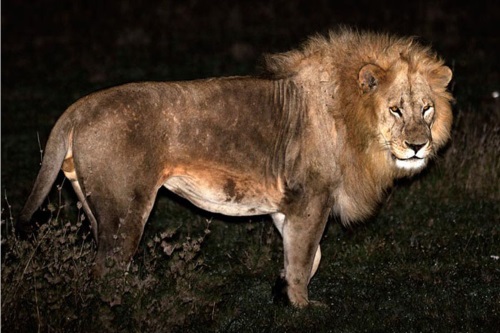
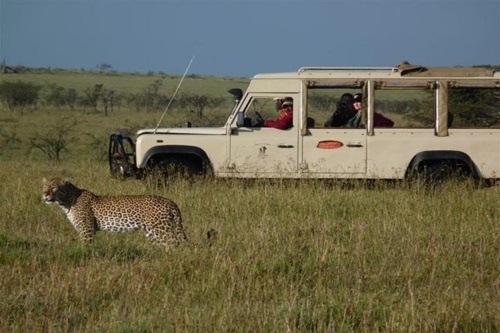
Trip Advisor 19 June: The tourists’ experience: A customer comments…
Altruism meets commerce:
“The Porini Camps Concept of engaging the Maasai in gainfully using their land as a conservancy has allowed wildlife to return in large numbers. Moreover, it has allowed the Maasai to step into the 21st Century whilst staying in touch with their roots & yet earning a modern wage.
From the point of view of the tourist; you get an authentic experience of the African bush & its peoples, whilst staying in camps that have most of the creature comforts that urban mankind has got used to. The drives are individual and off the beaten track, the guides are English speaking Maasai who naturally have an intimate knowledge of their land.
In brief, the Porini people are the flip side of the parasitic tour operator. ”
